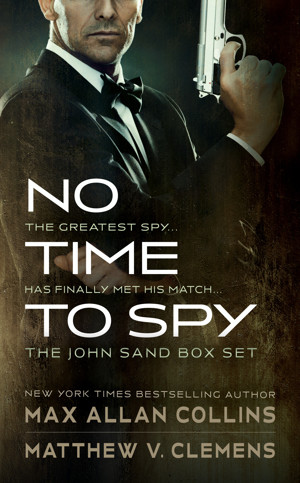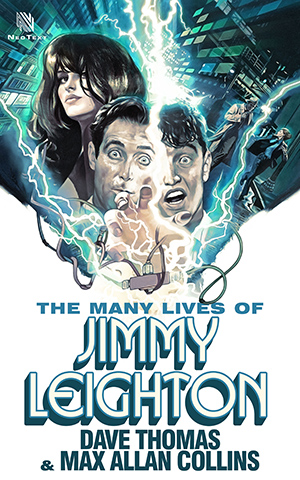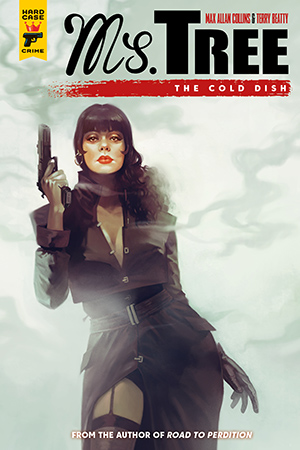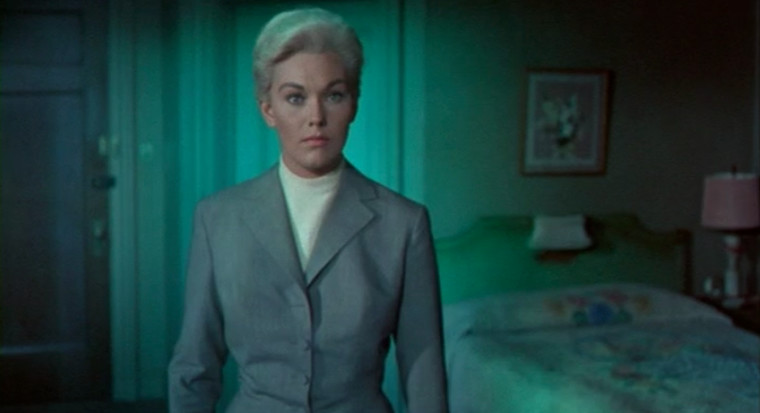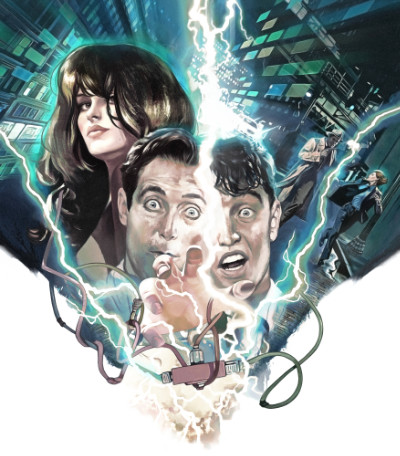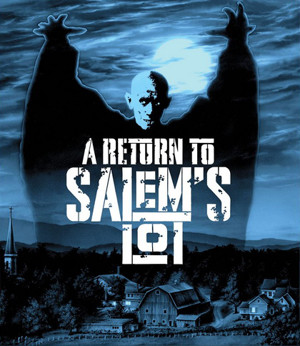My concern for your welfare knows no bounds. Hence, I am helping you with your Christmas shopping by pointing out a couple of possibilities for last-minute gift-giving (or post-Christmas use of Amazon gift cards). Later on this page I will talk about some Christmas CDs you might wish to consider. But first….
The three John Sand spy novels, collected in an omnibus titled No Time to Spy, will be out tomorrow (Dec. 15, 2121) on Kindle. It’s a mere $5.99. A print version will follow, probably before the end of the year.
Get it here.
The Many Lives of Jimmy Leighton is on sale on Kindle for a ridiculous $3.99. The trade paperback, with a cool Faye Dalton cover, is available now for $8.99, also a steal. You can order right here.
Dave and I did an interview about The Many Lives of Jimmy Leighton for The Dave Thomas Appreciation Page on Facebook. Emily Elizabeth conducted it. Here it is:
MAX: It’s a contemporary hybrid of a science-fiction novel and a crime story. Jimmy Leighton is a smalltime thief who stumbles into a quantum experiment and gets thrust into one version of his life after another – various paths he might have taken but didn’t. Part of what sends him cycling through his many lives is getting shot, and throughout all of his trips he is in a coma in the hospital in the initial timeline. There two police detectives are trying to solve the mystery of who shot Jimmy Leighton – they are a mismatched pair, a veteran Black widower and a virtual rookie who is female and gay. How they come together as a team is a story in itself.
DAVE: Okay, Max has summed it up pretty well. Anything I would add to that would be redundant and boring.
There’s no denying that the concept of Jimmy Leighton is impressively unique, and that is quite the rarity these days in an endless cycle of regurgitated remakes and done-to-the-death storylines, so having a novel like this is beyond refreshing and is something we could all really benefit from, more frequently, as an audience. How did you initially develop the idea for the story?
MAX: I’ll defer to Dave on that, except to say that he had more than the basic idea – he had a story treatment and two or three chapters. That was our beginning and as both of us have experience in the world of crime fiction – me as a novelist primarily, and Dave working on Blacklist and Bones – we developed the secondary story about who-shot-Jimmy-Leighton.
DAVE: Okay, so here’s what happened. Initially, I came up with The Many Lives of Jimmy Leighton as an interdimensional television show – I’ve always been interested in time travel and other dimensions, and I’ve had more than one idea in this arena. However, when I researched the physics behind a theoretical move to another dimension, I came up with Princeton Physicist Hugh Everett III who introduced a concept in 1957 that became known as the Many Worlds Interpretation. What Everett said was that all the outcomes of every choice exist – even if they are not realized. For example, you come to an intersection and can turn right or left. If you turn right and get home safely, that’s your reality. But if you had turned left, you might’ve been in car accident and there would’ve been consequences to that. Everett believed that the right turn – the road not taken – created a universe where all the consequences of that righthand turn would tumble out, creating other choices and other consequences that ultimately created a different reality or universe. To me, the idea that there might be other universes where our lives are different, sometimes not dramatically different and other times very different, was intriguing. So, I worked this into a story about a little thief from South Boston who sticks his nose into a quantum physics experiment as a way in. Then I created some other characters and worked it up into a pitch for a television show. Well, it didn’t sell. So, I decided to write it as a book, something I’d never done but I’m always up for a new challenge. Well, I wrote three chapters. And then, in characteristic Dave Thomas style, I moved on to another better-paying project. I’m old-fashioned and I like to get paid for my work. So The Many Lives of Jimmy Leighton just kind of sat there for a year or two until I met Max. Now Max is an accomplished novelist and I was excited to hear what he had to say about this idea. Was it a novel or just a failed TV pitch? He read it, liked it, and said, in his opinion, it could be a novel. But then he went on to say he’d be willing to get me a book agent, a publisher or – what he’d rather do is write it with me. Well, that was all I needed to hear. I mean, the guy has written more than 100 novels and I had written…well, none! So, we started to talk and, very soon, Max helped me realize that what I’d come up with was not a novel at all but merely a layer for a novel. Working with Max made The Many Lives of Jimmy Leighton into a book. We added the two investigators, Neer and Farr, and the concept that Jimmy had been shot when he broke into the physicist’s lab – that became a mystery layer of the story that grounded the whole sci-fi concept. And what was a particular surprise to me, was that the idea of Jimmy getting shot also helped make the physics behind the book make more sense. Because, according to Everett, the only way to cross the barrier from one dimension to another was to commit “quantum suicide.” Well, we weren’t going to do that because we wanted Jimmy to be able to come back at the end of the book to the dimension where he started and resolve the story. But getting shot and hovering in a coma, halfway between life and death – now that gave Jimmy an entrance to other versions of his life that he couldn’t control. Okay, I know, I know, this is much more of the mechanics of our writing that anyone needs or wants to know. But this is an example of how the collaboration made this book greater than my original concept for it. The sum of the parts, right?
What would you say was your favorite thing about working with each other?
MAX: Dave challenges everything – makes me reach for something new or different, not just the path of least resistance. Also, we share a lot of interests, and it’s always fun when we realize we have something other enthusiasm in common.
DAVE: I think I answered that in the previous question. But maybe I could add that I learned a lot of technical stuff working with Max – things that a writer needs to know when he moves from one type of writing which, in my case was television, to another form – namely, the novel. Max knows novels and he was my teacher in this collaboration. There were just so many technical things about writing a novel that I needed to know that I didn’t know. It’s funny, I went all the way through university to the Masters Degree in English literature, taking apart the works of famous writers like Conrad, Vonnegut and Faulkner, writing essays on style and structure but that does not teach you how to write a novel. To do that you need someone like Max, someone who has spent years sitting in front of a typewriter, banging out thousands and thousands of words, learning all the tricks by doing. It’s the old saying – “there are those who write and those who teach about writing.” To me, the best way to learn anything is by working with someone who actually does it for a living.
If Jimmy Leighton were to ever be adapted into a film or television series, is there any role, either on or offscreen, that you would like to take in it?
MAX: I’d love to collaborate on a screenplay of it or TV series adaptation with Dave, who is a terrific screenwriter. I think he should play Dr. Goldman but he doesn’t agree…but he has to play some role.
DAVE: I have no interest in acting in an adaption of Jimmy Leighton or anything else for that matter. Acting is for young people who really want to do it and I am not young anymore. Personally, I think I look terrible on camera. I just plain don’t like looking at my face on the screen. On the other hand, I love telling stories. And I can do that without showing my old face. I would be happy to write a screenplay or teleplay with Max – especially since we would be on my home turf there and maybe I could be as valuable to him as he was to me in the world of novel writing.
Being an avid longtime fan of Dave’s work, I have noticed a slight similarity between this story and what is easily my favorite project of his, which is an amazing 1980s Showtime television film titled The Incredible Time Travels of Henry Osgood. The film centers around Dave’s character, a history professor displeased with modern life, who finds himself thrown firsthand into a number of various historical periods and events after being hit by a car. In what ways do you feel these two stories, and their respective titular characters, could be juxtaposed against each other?
MAX: My working relationship with Dave grew out of being an SCTV fan in general and a Dave Thomas fan in particular. I have a copy of Henry Osgood and knew there was a resonance between the two stories. As we got to know each other, it soon became obvious that we were both interested in a certain kind of fantasy story with a real-life aspect – Here Comes Mr. Jordan, A Christmas Carol, Groundhog Day. I’d always wanted to do that kind of story and Dave made it possible for me to realize that.
DAVE: When I first went to Disneyland, my favorite ride was not the most elaborate rides like Pirates of the Caribbean or the haunted House. It was the Peter Pan ride where you get in a rickety little cart and roll into Wendy’s bedroom and then the window opens and out you go, flying over the city of London and off to Never Never Land. That’s my favorite type of story – where the writer opens a window in the real world and beacons the reader to take a trip with him – out the window to some other reality where the rules are different and strange. I love stories like that. So, of course, whenever I get a chance to write them, those are the sorts of stories I love to tell.
Imagining for a second that the multiverse is, in fact, real, do you believe there are any versions of Dave Thomas and Max Collins out there who are living particularly interesting lives?
MAX: I often think about the paths not taken – both in terms of the right and wrong choices I’ve made, but also luck…even fate. Sometimes it seems like Dave and I were fated to do this project together. We have an incredible number of things in common.
DAVE: I absolutely believe there are better versions of me out there in the multiverse. And worse versions too – because I have dreamt about them. Ugggh! It’s pretty scary. So yes, I believe in alternate universes. And I believe in ideas. That’s one thing little kids don’t understand when they learn that Santa Claus isn’t real. No need to cry kids because no version of a real Santa will ever be as powerful as the idea of Santa. We all have a picture of him in our minds’ eyes, fat and jovial with a perfect beard, a real one, and a twinkle in his eye that says he knows who’s been naughty or nice. He’s perfect and will live forever.
Finally, with the holidays coming up: is there any chance of autographed copies becoming available? I can’t think of a better gift!
MAX: Because the book is only available through Amazon, we haven’t figured out a way to do that. We haven’t even met in person! It’s all been phone and Zoom calls…a lot of them. During the Covid lockdown, we spoke pretty much every day.
DAVE: Sorry… maybe ask Santa for it. But if it doesn’t come then don’t get all dramatic and sad. After all, it’s just a stupid signature. The real gift is the book. And it’s only $8.99 on Amazon ($3.99 for Kindle). Happy Holidays to all.
Here are some of my favorite Christmas albums available on CD, a physical media that is quickly approaching eight-track status. This is not a “best Christmas Albums of All Time” list – just what Barb and I enjoy.
I tend toward secular Christmas music, because the non-religious aspect of the holiday is my preference. My parents, who did so much positive in my life (as you may recall from previous posts), made me despise church and particularly recoil at most Christmas religious music. This has to do with my father being the minister of music at a Methodist church and throughout my childhood (aided and abetted by my mother) ruining a wonderful holiday of gift-giving and greed by (a) making me go to a midnight Christmas Eve service every year and (b) taking me away from my gifts for a week of travel (starting by car after that midnight Eve service) to both sets of grandparents to eat up my Christmas vacation.
So I lean toward Santa Claus and chestnuts roasting with a minimum of Jesus and Silent Night (although that’s a lovely song).
1. DEAN MARTIN – “Making Spirits Bright.” This is the ultimate cool, laid-back Christmas CD, and “Silent Night” is the only exception of the “Let It Snow” vibe (and it’s a very nice version at that). “Christmas with the Rat Pack” is pretty good, too, but take your Dean straight, if you can.
2. DIANA KRALL – “Christmas Songs.” This is fairly new and a softly jazzy wonderful compendium of all the usual suspects. She has a smoky voice and whimsical approach that reminds me of Julie London while being very much her own artist.
3. PHIL SPECTOR – “A Christmas Gift for You.” Sure, he was a murderer, but he rounded up the likes of Darlene Love, Ronnie & and the Ronnettes and the Crystals to wish you a merry Christmas. Just because he spent his last years behind walls doesn’t mean we can’t dig his wall of sound.
4. THE BEACH BOYS – “The Beach Boys’ Christmas Album.” One of Brian Wilson’s early masterpieces. My band used to do “Little Saint Nick” and let me tell you, doing Beach Boys material is hard. Sounds so simple and is so darn complex. Bask in those harmonies while sipping hot chocolate by the fire. Do it now!
5. BOBBY DARIN – “The 25th Day of December.” Darin’s presence on this list will come as no surprise, but except for “Christmas Auld Lang Syne” (a single release not on the original album) no Brill Building pop is on this at all, and no American songbook classics like Dino’s album is rife with either. It’s all religious stuff, but is one of Darin’s best albums, beautifully sung with a lot of rocking spirituals, in particular “Child of God.”
6. SOUTH PARK – “Mr. Hankey’s Christmas Classics.” If I included a murderer, why are you surprised by the presence of a talking poo? Or maybe you aren’t. We spend Christmas in Hell and along the way hear the best version of “Oh Holy Night” ever.
7. LET IT SNOW! – a cocktail lounge collection of Christmas tunes. There are a bunch of these anthologies out there and you probably only need one. This is as good as any.
8. THE BRIAN SETZER ORCHESTRA – “Christmas Rocks!” This is a “best of,” but really any one of Setzer’s CD’s will do. You probably don’t need more than one.
9. ELLA FITZGERALD – “Ella Wishes You a Swinging Christmas.” One of the best secular, swinging Christmas albums ever made. And no religion at all. Bliss!
AND FINALLY…
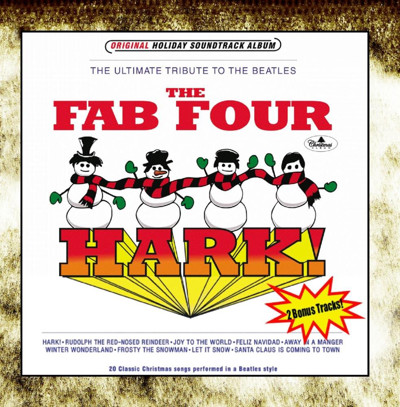
10. THE FAB FOUR – “Hark!” The best Beatles tribute band of all time collects its two Christmas albums (one of which had songs in an early Beatles style, the other in later, psychedelic Beatles mode) on one disc with two bonus cuts. This is a dead-on Beatles imitation, hilarious at times in its witty restructuring of Christmas classics into ghosts of Beatle songs past. For years I gave many copies of the original releases to friends and particularly bandmates over the years. This really is the great Beatles Christmas album the Beatles never made. Get it here.
There’s also a Monkees Christmas CD (“Christmas Party”), which I’ve only listened to a couple of times so far, but it’s very good. I’ll be spinning it more often now that the great Mike Nesmith has passed. Raise a glass of spiked egg nogg to the Wool Cap.
I really loved the Monkees TV show, and their albums, which I looked forward to almost as much as a new Beatles record. My first band, the Daybreakers, played many Monkees songs, and so over the years has Crusin’. Crusin’s was honored in 1992 to be asked to contribute to the Monkees tribute CD, Here No Evil. The CD was the brainchild of our great one-time guitar player, Rob Gal, and our track, “Little Bit Me, Little Bit You” – produced by the late Paul Thomas (miss you, buddy) – was singled out in the reviews. Nesmith was a wonderful songwriter, signer and comic actor, and he appears to have come to positive terms with his Monkees tenure and fame.
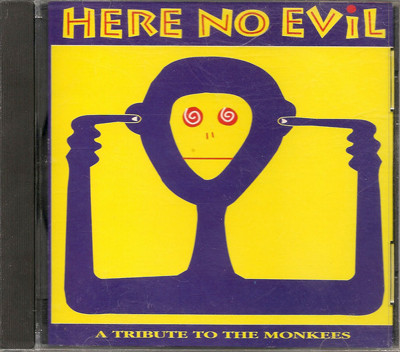
This great review of Three for the Money, the Jack Kamen EC crime story collection, is complimentary about my introduction. The Christmas spirit has finally brought Fantagraphics and me together….
M.A.C.
